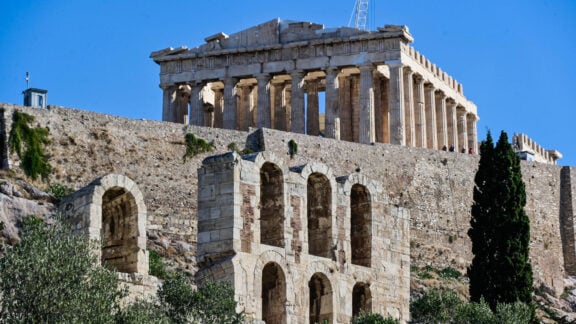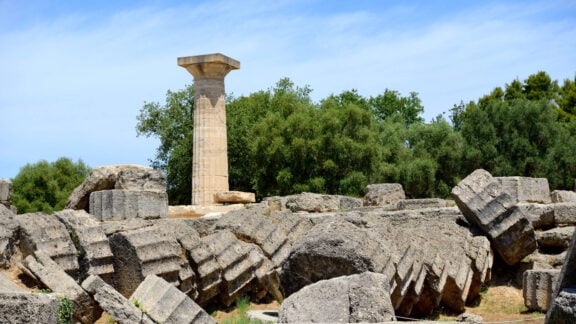Greece is in store for a momentous exhibition of great archaeological significance with a fruitful collaboration allowing for the untold stories of Cycladic women to be shared to the whole country.
The first pan-Cycladic exhibition kicks off on 12 December and will run until May, showcasing archaeological delights that present history through the eyes of the women of the Cyclades, from early prehistory to the 19th century.
The collection, titled ‘Kykladitisses: Untold Stories of Women of the Cyclades’ brings together in Athens 180 unique masterpieces from almost all the islands of the Cyclades: Amorgos, Andros, Delos, Thera, Ios, Kea, Kythnos, Melos, Mykonos, Naxos, Paros, Seriphos, Sikinos, Siphnos, Syros, Tenos and Pholegandros.
It is a landmark deal owed to a collaboration between the Ministry of Culture’s regional office ‘Ephorate of Antiquities of Cyclades’ and the Museum of Cycladic Art, with the collection to be shown in various parts of Greece.

The exhibition will display unique works, most of which have never travelled either outside the Cyclades or outside the Museum of Cycladic Art; some have never been presented to the public.
It is comprised of various artefacts like statuettes and large-sized sculptures, vases, jewellery, coins, funerary stelae, inscriptions with legal texts, frescoes, mosaics, engravings, manuscripts and icons – ranging from prehistoric to post-Byzantine times.
Greece’s Minister of Culture Lina Mendoni stated in the official press release of the exhibition that it explores two timeless issues: the position of women through space and across time, in history and culture, and their positions in insular societies.
“In this exhibition, women are the central characters in the private and public spheres: in the family, religion, economy and in politics,” Mendoni said.
“The dichotomy between limitation and dynamic presence at one and the same time reflects their resilience, adaptability, and ability to redefine their identity and role to suit the circumstances of each era.”
Sandra Marinopoulou, President and CEO of the Museum of Cycladic Art, highlighted her immense joy that the first joint action of the Museum of Cycladic Art and the Ephorate of Antiquities of Cyclades is a major archaeological exhibition concerning women.
“Kykladitisses will be a landmark inter-Cycladic exhibition, as it brings together for the first time so many masterpieces of the Cyclades under one roof,” she said.

Marinopoulou added that they have decided with the Ministry to let it continue its journey to the Cyclades “to inaugurate the renovated Archaeological Museum of Thera”.
“This is also a way to contribute practically to the spreading of the knowledge of the Cycladic culture and to give something back to the Cyclades, as they are the reason for the existence of our Museum.”
The exhibition marks the first collaboration based on the Memorandum of Cooperation signed earlier this year by Mendoni and Marinopoulou, which has the central goal of studying, highlighting and promoting the Cycladic culture in Greece and abroad.
The collection will be hosted first at the Stathatos Mansion, before being presented in its entirety at the renovated Archaeological Museum of Thera, which will officially re-open its doors with this presentation.
The curators of the exhibition are Dr Demetrios Athanasoulis, Director of the Ephorate of Antiquities of Cyclades, and the Academic Directors of the Museum of Cycladic Art, Dr Panagiotis P. Iossif, Professor at Radboud University in the Netherlands, and Dr Ioannis Fappas, Assistant Professor at the Aristotle University of Thessaloniki.
The exhibition is structured around 12 sections: 1. Juggling between two genders, 2. The origin of the world, 3. Goddesses of the islands, 4. Female apotropaic figures, 5. In the sanctuaries, 6. Goddesses of the sea, 7. Women’s identities, 8. From the Oikoumene to the Archipelago, 9. Eroticism, 10. Violence, 11. Death through their own eyes, 12. Faces.








